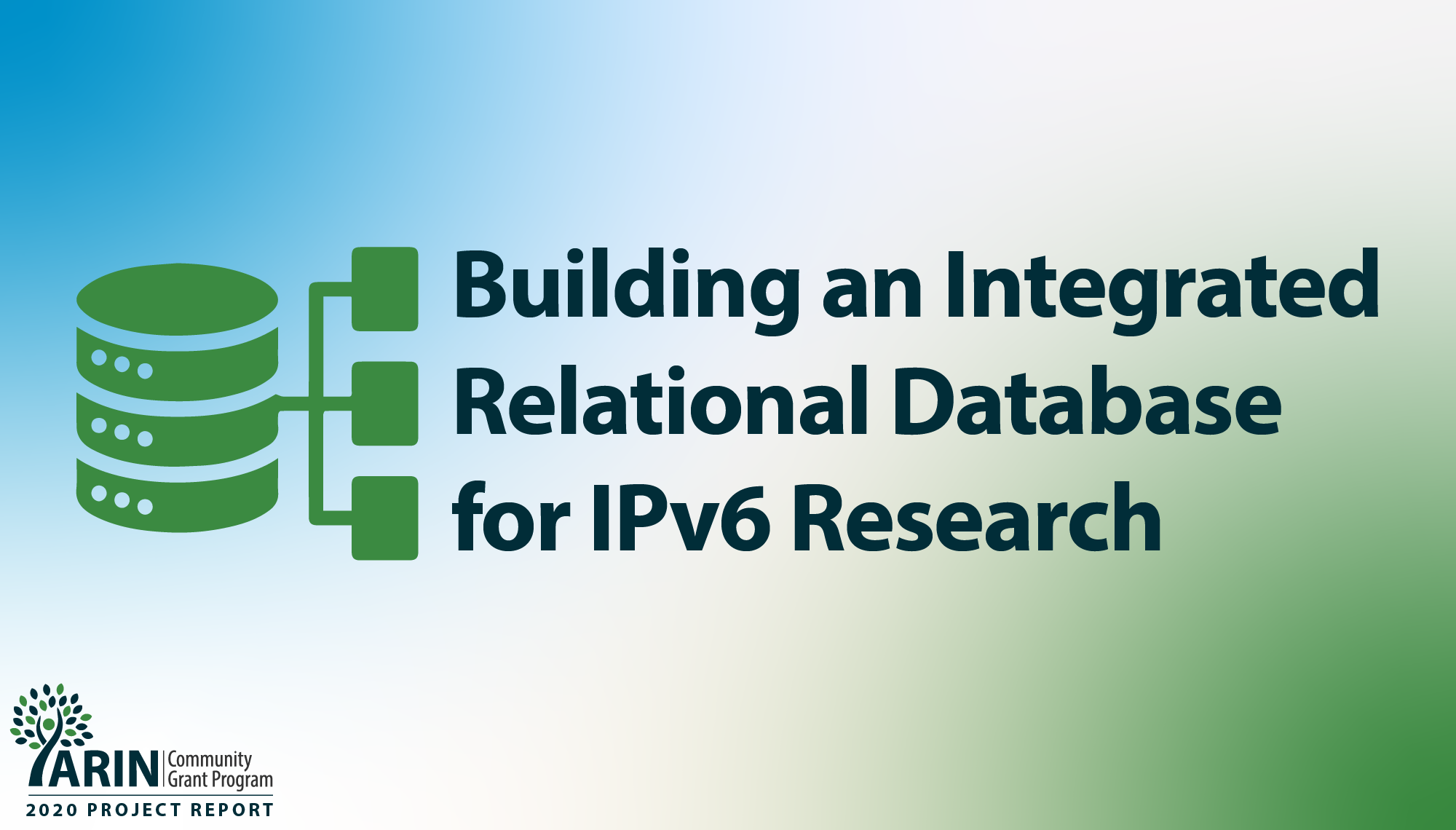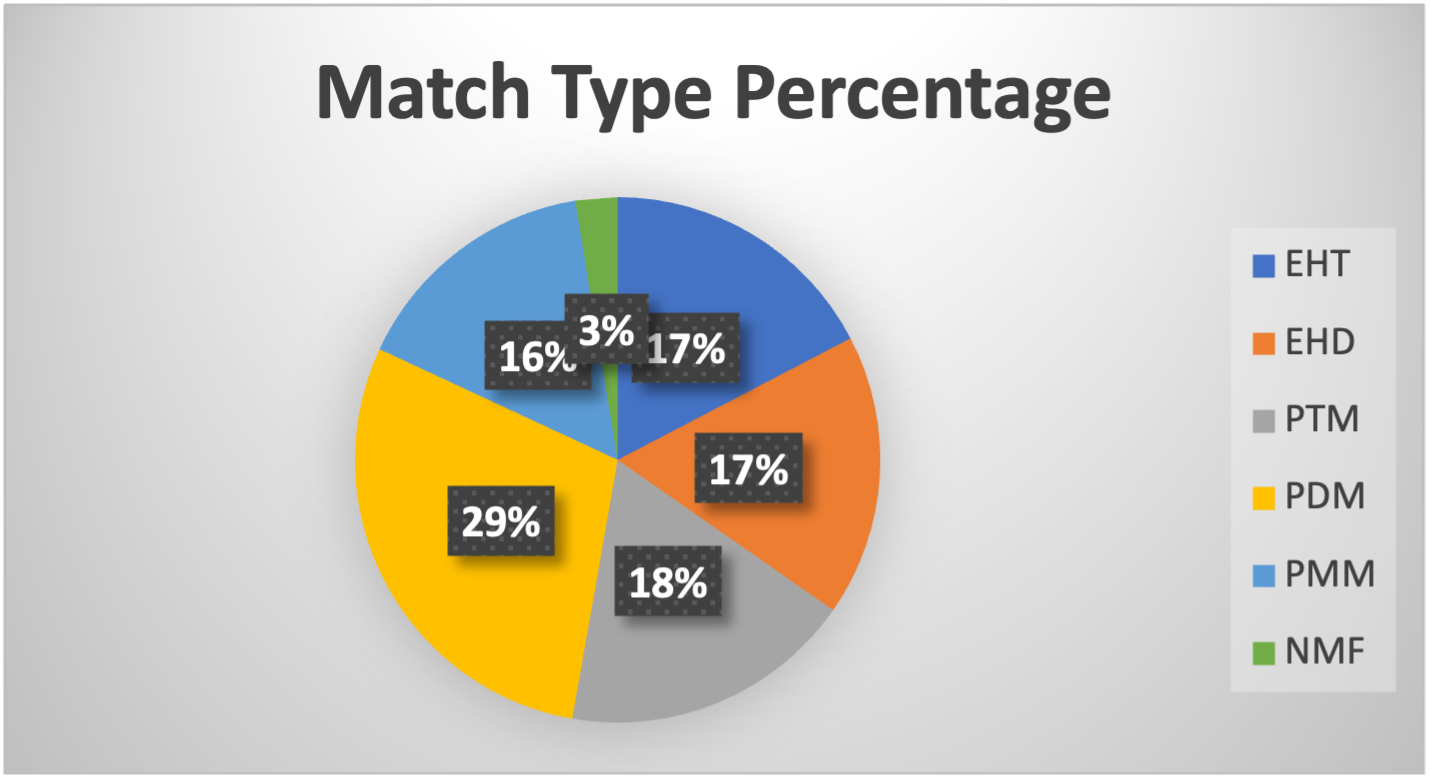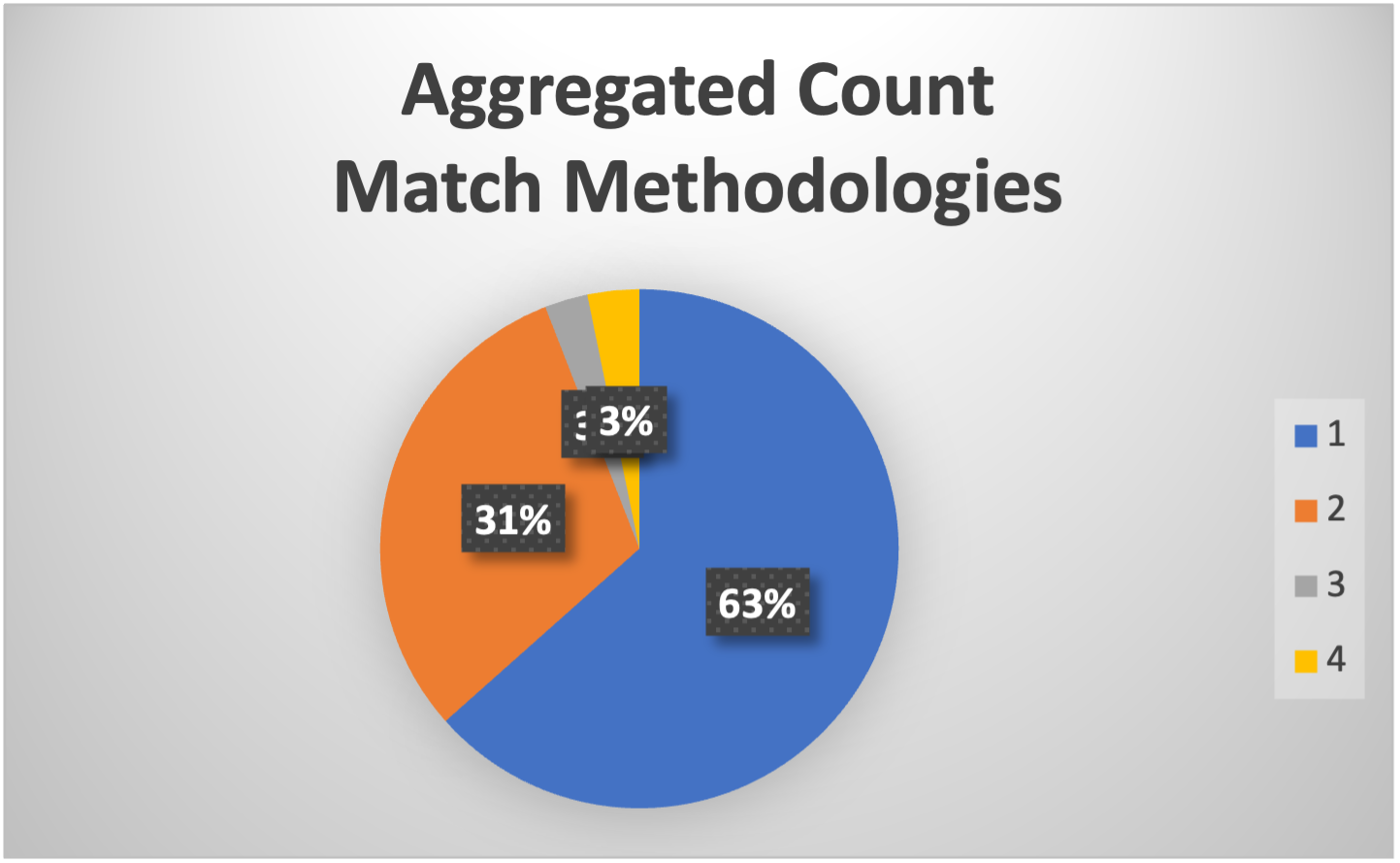
Building a Database For the Future of IPv6
ARIN Community Grant Program Recipient Report
Saatvik Research received ARIN Community Grants to work on creating a database of IPv6 adoption culled from both ARIN and National Institute for Standards and Technology (NIST) data that can be used to identify trends and roadblocks for enterprise IPv6 adoption as well as provide a foundation for Internet researchers.
The initial body of research from the relational database will define leading indicators of IPv6 adoption to complement the more common lagging indicator of traffic. Gaining an understanding of enterprise IPv6 adoption trends by analyzing the standard deviations from address acquisition through service enablement of web, DNS, and email is critical for policy making bodies (government, non-profit and private) to estimate IPv6 adoption timelines as well as industry-specific adoption strategies and incentives.
Overview
The shift from IPv4 to IPv6 has been slow for enterprises, but we believe by integrating data from ARIN and NIST, we may be able to recognize patterns that can help guide enterprise accounts to help make the switch in the future.
We first acquired ARIN, NIST, and Fortune 1000 datasets and actively engaged in the integration process. We produced a preliminary Bass diffusion model for direct assignments and allocations, which applies to addresses acquisition behavior and does not offer any insight into enterprise adoption behavior. It was then necessary to identify enterprise adoption patterns by applying the three phases of statistical analysis (descriptive, predictive, prescriptive) to enterprise IPv6 service enablement. The initial analysis was conducted prior to the ARIN Community Grant award and was conducted manually, matching ARIN org_name to NIST domain.
The ARIN grant and NIST’s collaboration have enabled us to improve results by matching ARIN and NIST entity data through automated and manual methods. The level of complexity in matching entities in disjointed data sets has proven to be more complex than initially anticipated. Our final matching strategy was achieved by developing a multi-part heuristic for entity matching resulting in a highly iterative approach, and we have made strides in developing a reproducible methodology for potentially expanding this analysis to other Regional Internet Registries (RIRs).
We have generated preliminary metrics for entity matching and the methods deployed with approximately one third of the total population having completed both automated and manual matching processes.

Legend: EHT=Email heuristic title, EHD=Email heuristic domain, PTM=Page Title Match, PDM=Page Domain Match, PMM=Painful Manual Match, NMF=No Match Found
Individual matching methods have yielded the following results: The highest rate of success was found with PDM with 29%. EHT, EHD and PTM each represent roughly the same matching success at 17%, 17% and 18% respectively. We identified four automated matching methods, validated by a manual matching process. In 3% of the cases no entity match was found between the ARIN and NIST datasets by any of the methods utilized.

Legend: EHT=Email heuristic title, EHD=Email heuristic domain, PTM=Page Title Match, PDM=Page Domain Match, PMM=Painful Manual Match, NMF=No Match Found
A single entity matching method was successful in 63% of our entity matches (inclusive of PMM), 31% were matched by two matching methods, entities matched by 3 or match matching methods each represent 3% of the total.
Additional matching metrics will be published with our final results.
Benefits to the ARIN region
The internet community, specifically the IPv6 community, does not currently have access to an integrated source of data from which to conduct research. This project closes that gap and makes the resulting relational database publicly available to entities conducting their own research into IPv6 adoption and usage. It is anticipated we will be able to develop enterprise, and ultimately industry-specific, strategies once we know how long enterprise IPv6 adoption is actually taking.
One of the goals of this project was to lay the foundation for internet researchers to ask additional questions of IPv6 activity from the integration between ARIN & NIST datasets. We have identified additional areas of interest: e.g. cloud provider trends, explicit or inferred address re-assignment behavior, IPv6 service flapping and anticipate the internet community to ideate many more.
What’s Next For the Project?
We will need to complete manual validation as well as perform statistical analysis. After that, we’ll need to disseminate the information. The next output will be a validated list of the matched entities, updated with the first seen dates in address acquisition and externally detectable IPv6 service for the three services NIST tracks. We believe this will help define the leading indicators of enterprise IPv6 adoption related to address acquisition, inclusion in the BGP routing table, and IPv6 service enablement (web, email, DNS).
About the ARIN Community Grant Program
ARIN provides financial grants in support of initiatives that improve the Internet industry and user environment. Since its launch in 2019, ARIN has funded 15 projects. Visit the ARIN Community Grant Program page for more information and to find out how your organization can apply in 2022.
Any views, positions, statements, or opinions of a guest blog post are those of the author alone and do not represent those of ARIN. ARIN does not guarantee the accuracy, completeness, or validity of any claims or statements, nor shall ARIN be liable for any representations, omissions, or errors contained in a guest blog post.
Recent blogs categorized under: Grant Program
GET THE LATEST!
Sign up to receive the latest news about ARIN and the most pressing issues facing the Internet community.
SIGN ME UP →Blog Categories
Caribbean • IPv6 • ARIN Bits • Tips • Updates • Elections • Outreach • Security • RPKI • Public Policy • Guest Post • Grant Program • Fellowship Program • Data Accuracy • Business Case for IPv6 • Internet Governance • Training • IPv4 • Customer Feedback • IRR



